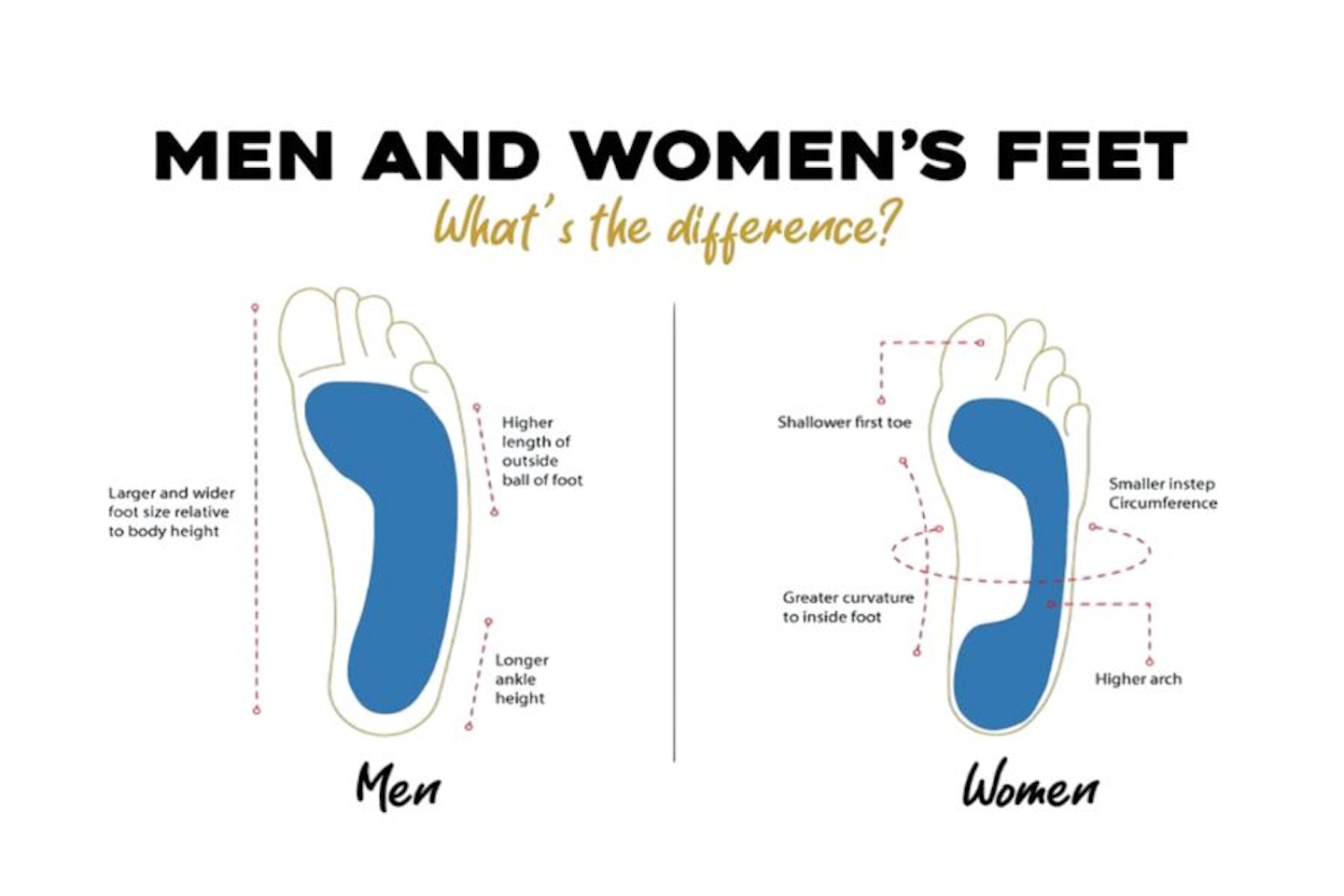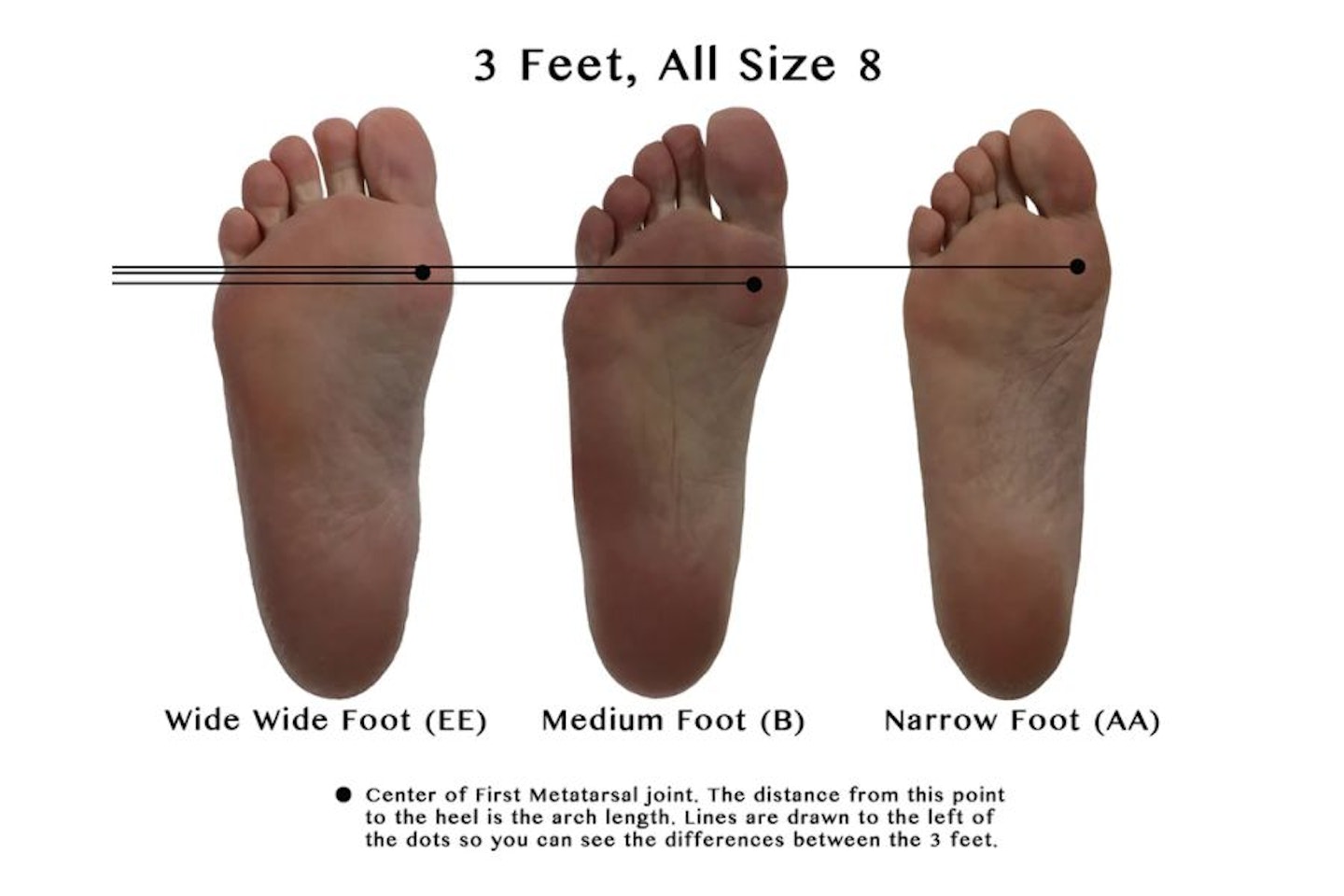The difference between men's and women's gym trainers have gone far beyond colourways. No pink for a girl, and blue for a boy anymore. Well, those colourways still exist, but there's more to men's and women's trainers than just a difference in design. There's subtle nuances in cushioning, changes in stability and shape, there's even variations in the way each gender walks. Now, more than ever, we need gym trainers that can cater to distinct anatomical needs and biomechanical differences.
Knee injuries in women are more common than ever, look at Arsenal's Beth Mead and England captain Leah Williamson, who both suffered with ACL injuries. The risk of this type of injury is up to eight-times higher in female athletes compared to male, according to studies earlier this year. Although this can be attributed to many factors, including hormonal and anatomical, it can also be down to settling for trainers that don't fit properly.

In fact, a survey by the European Club Association's advisory group reported that 82% of female football players regularly experience discomfort while wearing football boots. This is likely because football boots are usually designed on the male foot anatomy, gait and running kinematics.
So, what is the actual difference between buying a pair of men's gym trainers vs women's? Let's delve into the intricacies and uncover why choosing the right pair of trainers matters more than you think.
Biomechanical differences
It's common knowledge that men's and women's feet differ in size. In the UK, the average male shoe size is a 9, while the average women's is a 6. But, the dissimilarities extend far beyond mere measurements. Biomechanical differences, like foot shape, arch height and pronation tendencies each play a role in determining the ideal gym trainer for each gender. Women tend to have narrower heels, higher arches and wider forefeet compared to men. Consequently, gym trainers designed for women often have a narrower heel and added arch support - with brands like FitFlop working hard to create trainers that are engineered to a woman's gait.

There's even differences in the way men and women walk, as women often have shorter (but more frequent) strides that are a result of their smaller height.
Width
There is no standardised width of shoes, so you can have three feet, all a size eight, yet the individual with the wider foot might not fit in a size eight simply because of width.

It's worth noting that when a shoe feels slightly too small around the arch, the solution doesn't always have to be to size up. Instead, if a brand offers it, opt for a wider fit. A reliable indicator of the correct width fitting is when the sides of your feet perfectly align with the edges of the footbed. And, make sure that the heel is sitting in the heel cup. If you're finding this isn't the case with any gym trainers, you could always try the opposite gender's model instead of going up a size.
Typical cushioning
The impact of every step you take in ill-fitting gym trainers can take a toll on your body, so adequate cushioning is crucial. Men's trainers tend to have firmer midsoles and targeted cushioning in the heel to address their greater muscle mass and higher impact absorption requirements (for sports like weightlifting). Alternatively, women's gym trainers will feature a softer midsole and additional cushioning in the forefoot area only, to accommodate their typically lighter body weight.
The right amount of stability
Whether you're running, in the gym or playing a team sport, you're going to want as much stability in your shoes as possible. It's essential for minimising the risk of injury, and it's also needed to improve performance. But, gendered trainers aren't always made equal - they're often tailored for different things. Women's for flexibility and agility, to help with natural foot movement, meanwhile men's are designed for stability and durability. They usually come with a reinforced midfoot and heel structures to withstand higher impact forces, too.
Design choices
Of course, we couldn't not mention the design differences between the gendered gym trainers. Although design isn't everything to some people, others may think that aesthetics are really important in their gym shoe. Nowadays, women and men's trainers are typically equally as bright. For example, the Nike Vaporfly 3 trainers come in this extremely vibrant lime green (or as Nike call it, 'scream green') for both men and women. You may find that sharing colourways is more of the case these days.
Can a man wear women's trainers?
As we've explored, modern fashion trends and design principles have changed. Men seeking a snug fit in their gym trainers, or if they generally prefer the design of female trainers more, may find them to be a better option. But, there is a catch. The trainers should still suit the natural foot shape and biomechanics. If a women's shoe fits better than a man's because of foot width, then choosing a gym trainer that's labelled as the opposite gender will be perfectly fine.
Can a woman wear men's trainers?
Again, there are no strict rules saying that women can't wear men's trainers. Some women find that men's gym trainers offer them a wider variety of options in terms of styles and features. So, as long as your shoes provide the necessary support, comfort and performance, women are more than welcome to explore and wear men's trainers if they find them more suitable.
In fact, it's more common for women to be able to comfortably wear men's gym trainers than the other way around as men's trainers usually go up to a larger size.
What is the problem with wearing the wrong gym trainer?
Wearing the wrong gym trainer, or rather an ill-fitting one, can spell disaster for your workout. You'll find your progress halted by discomfort, blisters, or even worse, an injury.
Trainers that don't fit properly can lead to a whole host of issues. From foot pain and blisters, to more serious conditions like plantar fasciitis or stress fractures. They could also even affect your balance and form, again increasing the risk of injury and stopping you from performing as well as usual. If you take anything away from this article, let it be to invest in a good pair of gym trainers, one that will safeguard your body and maximise your gym session.
What is a unisex gym trainer?
Unisex gym trainers, like the Adidas Dropset 2 and the Reebok Nano X4 trainers, act as a halfway house between men's and women's shoes. They're often made with a universal fit and neutral colour schemes to appeal to everyone. Although unisex gym trainers transcend gender norms, there are a couple of things to watch out for, especially if you're a woman.
Unisex gym trainers aren't tailored towards either gender, but they do have a wider fit compared to a regular women's shoe because they need to fit men too. If you're a woman with wider feet, this may be beneficial. For women with feet on the narrower side, unisex trainers might be a no-go.
For men, unisex trainers will probably be a great fit, particularly if you're a man with narrower feet as they're usually not as wide as regular men's trainers.
Ultimately, the world of gym trainers is as diverse as the individuals who wear them. While men's and women's trainers both sport their own features that are designed for differences between genders, it's important to keep in mind that comfort, fit and performance know no gender.
Gemma Lavers is a Health & Fitness Writer for What's The Best. From understanding nutrition to practising yoga and Pilates to delving into the psychology of motivation. She enjoys demystifying the latest fitness trends and staying on top of the dynamic health landscape, whether that's the best gym leggings, fitness trackers or the benefits of yoga.
When Gemma’s not writing, she can be found attending Pilates, yoga and Zumba classes. She’s also a bit of a home workout aficionado, constantly trying out new ways to keep her moving at home. Between writing, exercising and shopping, there’s nothing she loves more than hopping on a plane and exploring new cultures.
Subscribe to the What’s The Best Newsletter to keep up to date with more of the latest reviews and recommendations from the rest of the What’s The Best team.
